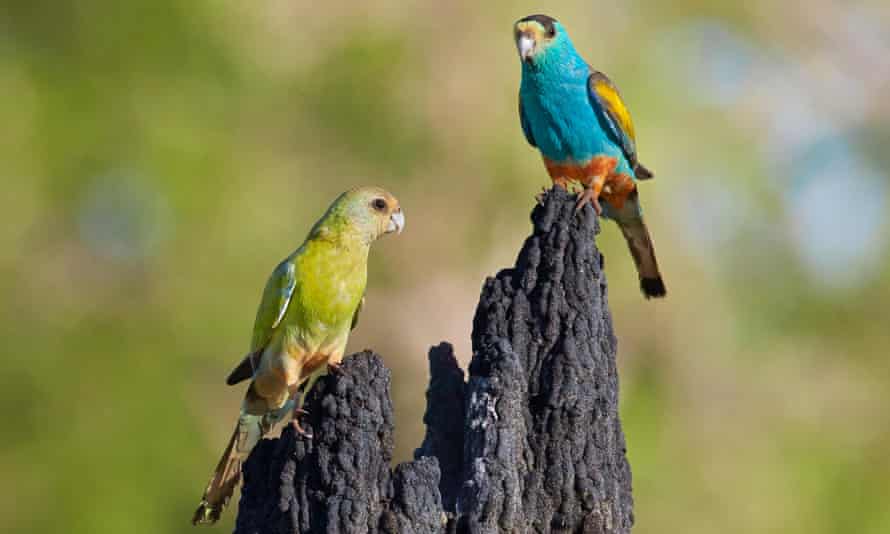Nature’s Paris moment: does the global bid to stem wildlife decline go far enough?
There are concerns a new UN biodiversity framework is not ambitious enough and calls for Australia to take a leading role

Can nature have its own Paris moment?
It’s the question facing countries negotiating a new United Nations agreement aimed at stemming the global loss of wildlife.
Last week, the UN convention on biological diversity released the latest draft of an agreement that would unite countries behind a shared ambition to halt and reverse the decline of the variety of life on earth.
Much like the Paris climate agreement set a target to limit global temperature rise, the new global biodiversity framework would set targets for protecting and restoring nature.
Environmental advocates argue that Australia – as the only developed, megadiverse country that has ratified the treaty – should be a leader in the process. Instead, they say, it is running with what one observer of the negotiations described as “the middle of the pack”.
What is the proposed agreement?
The agreement would set new post-2020 ambitions for nature under the UN convention on biological diversity. It would replace existing targets that were set in Aichi, Japan, in 2010.
This would be articulated as a series of milestones and goals to be reached over decades, with an ultimate goal of living in harmony with nature by 2050.
Scientists have warned that human activity is driving the sixth mass extinction, threatening a million species and the healthy functioning of ecosystems that produce food and water and support human life.
The latest draft proposes milestones to be reached by 2030 to improve our relationship with nature.
They include a global milestone to protect 30% of all land and 30% of all sea areas, halving the introduction and establishment of invasive species, reducing public subsidies for industries that harm wildlife by US$500bn a year, eliminating plastic waste entirely and reducing pesticide use by two-thirds.
There are also targets to reduce the risk of extinctions by 10% and for countries to find ways to factor the benefits nature provides to society into their accounting. And there are then larger goals to be achieved by 2050, including a tenfold reduction in the rate of extinctions and a halving of the risk of extinction for all species.
By 2050, countries would be expected to show that nature’s contribution to people is properly valued, maintained and enhanced through conservation and a much more sustainable approach to development.
The agreement was due to be reached later this year at a conference of parties in Kunming, China. Due to the Covid-19 pandemic, it is expected that will be delayed and negotiations will continue into 2022.
Calls for more ambition
The response to the draft has been mixed.
One of the longstanding criticisms of the convention on biological diversity is that targets are not binding on nations.
James Watson is a professor at the University of Queensland’s school of earth and environmental sciences. In a comment piece this week, he and colleagues argued the agreement needed more ambition.
He says the latest draft, while an improvement on previous iterations, does not come close to what is needed to achieve the goal of living in harmony with nature and he notes countries had largely failed to meet the earlier Aichi targets.
“What we know is many nations celebrate signing these 10-year plans and then spend the next few years gaming it so they do not have do anything to achieve the targets they set,” he says.
There has been much talk that the proposed agreement could represent a Paris-style moment for nature, uniting countries behind a singular goal.
For the climate accord, this was to limit global heating to well below 2C and preferably 1.5C.
“One of the things we’re hoping to achieve from this process and this draft is the one clear goal for nature that’s equivalent to the 1.5C goal that unites nations all around the world,” says Rachel Lowry, chief conservation officer at WWF Australia.
“Zero extinctions was put up as a potential and that’s where this framework does fall short.”
WWF has been an observer and participant in the international negotiations and says the proposal for a tenfold reduction in the rate of extinctions by 2050 does not go far enough.
It wants a commitment to zero extinctions by 2050 and a halving of the impacts of unsustainable food production.
Lowry said such goals, combined with the 30% protection targets for land and sea by 2030, could lead to significant change.
“Halt the decline. How do we sign up to anything less than that?” she says.
“We’re basically signing up to a future with less species richness. How can we do that for future generations?”
James Trezise, the conservation director of the Invasive Species Council, says one upshot of the negotiations is that countries appear to be coming to a consensus that the world is facing an extinction crisis.
“The UN is hoping to create a Paris moment for nature conservation, but it will need to have more ambition and a clearer call to action that resonates with the community to get there,” he says.
Australia’s role in the negotiations
There are 17 megadiverse countries in the world. Australia and the United States are the only two developed megadiverse countries and the US has not ratified the convention on biological diversity.
Megadiverse countries are highly regarded within the convention and Australia is looked to to provide leadership.
Nat Pelle, of the Australian Conservation Foundation, says on the international stage Australia is not presently “the pariah on biodiversity that we are on climate” and is well respected at the convention.
“What we can’t afford to do is turn up at Kunming and undermine the global biodiversity targets that nature needs when we have the genuine potential, and more reasons than most, to be one of the leaders,” he says.
The government and its negotiators have a good reputation in the forum for commitments relating to marine protection, reducing plastic waste and the establishment and funding of Indigenous protected areas.
But the country’s record on mammal extinctions is well known and the government has shown some reluctance to commit to specific targets around halting extinctions.
There has been another sticking point. The current draft of the agreement sets a disaggregated target to protect 30% of land and 30% of sea areas globally by 2030 – known as the 30×30 target.
In June, the Morrison government signed up to an international coalition of countries – known as the high ambition coalition – that committed to reaching a global deal to halt the loss of biodiversity.
At that time, the government was advocating for an aggregated target to protect a combined 30% of land and sea areas by 2030.
This is significant for a country like Australia, which has a vast marine protection system that already protects 36.7% of the country’s sea areas. The amount of terrestrial area protected is 19.7%.
An aggregated global target of 30% would significantly reduce the work the government needs to do to increase protections on land.
The office of the environment minister, Sussan Ley, told Guardian Australia the government now supports a disaggregated global target, noting it was a relatively new addition to the draft.
But it is unclear whether this means it would then support setting a domestic target to increase the amount of land Australia has protected to 30%.
Pelle notes that the current wording of the draft for a global target could mean that some countries would do more and others less in terms of domestic land and sea protections.
“Australia as a rich country that is mega-diverse, really big and sparsely populated has an obligation to do its fair share and that means protecting at least 30% of our own land,” he says.
Ley’s spokesperson said the government was considering what many of the proposed milestones would mean for Australia.
“This is early in the drafting process of the new post-2020 global biodiversity framework and Australia is committed to addressing the challenges facing biodiversity through a disaggregated global target,” he said.
“The inclusion of a disaggregated global 30×30 target is a new addition to the draft framework, which was released on 12 July 2021.”
The spokesperson said a target to halve the risk of extinction for all species was another new addition to the draft and the government was considering what this could mean for Australia, which has close to 2,000 species and habitats currently listed as threatened.
“The minister remains committed to recovering threatened species and preventing species extinction,” he said.
He pointed to the recently launched 10-year threatened species strategy and funding through regional land partnerships, the environmental restoration fund, Indigenous protected areas and the $200m bushfire recovery funding for wildlife.
Trezise says whatever the outcome of the UN process, Australia has an opportunity right now to improve conservation and address threats to wildlife as part of its response to the Graeme Samuel review of Australia’s national environmental laws.
“The world is clearly coming to a consensus that we are facing a global extinction crisis. The reality is the best time to start strengthening our environmental planning frameworks was yesterday,” he said.
.png)
